Were you aware that around 10% of all pilgrims arriving in Santiago de Compostela are ‘Bicigrinos’, those who embark on their journey by bicycle? Almost 25,000 Bicigrinos opt to cycle the Camino routes annually to obtain their Compostela certificate. Consider embarking on a cycling adventure along the Camino Routes.
With several distinct cycling routes leading to Santiago, choosing the right one is an important part of the journey. From coastal paths to inland landscapes, each Camino route offers a different rhythm, scenery and level of challenge. Below, we compare six of the most popular Camino cycling routes to help you decide which one suits your style and expectations.
If you are cycling the last 200km of the Camino de Santiago and aim to receive your Compostela certificate, ensure you cover this final distance into Santiago de Compostela.
New to cycling the Camino? Read our complete guide on everything you need to know about cycling the Camino de Santiago, from route options to daily distances and support along the way.
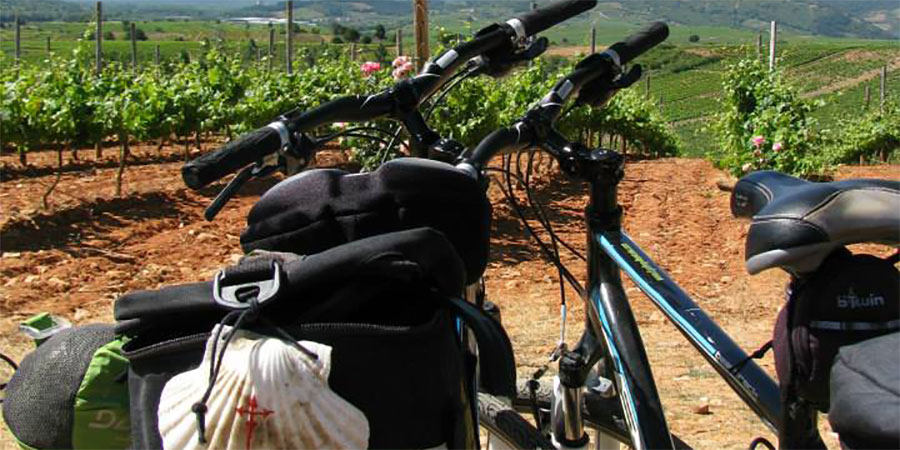
We have picked 6 great routes for those looking to experience the Camino on two wheels!
Table of contents
1. Cycling the Camino Francés
The Camino Francés holds the title of the quintessential Camino route, claiming the highest popularity amongst both walkers and cyclists. While it doesn’t boast the historical prestige of being the oldest route—that honour goes to the Camino Primitivo, originating from Oviedo—the French Way is celebrated as the most renowned and storied path. It also benefits from the most developed network of support services along the way.
This classic journey begins in St Jean Pied de Port, France. For those inclined towards cycling, we suggest starting your cycle from Pamplona and making your way to Santiago de Compostela, a distance of 659km (about 410 miles), which typically takes two weeks to complete, bypassing the Pyrenees. Alternatively, embarking on a cycle from Ponferrada, spanning just over 200km (approximately 125 miles), suffices for earning the Compostela certificate.
For a significant portion of the route, the path welcomes both pedestrians and Bicigrinos. However, there might be instances where cyclists are advised to dismount, especially in areas where the trail becomes too narrow or crowded, to ensure everyone’s safety. In sections that are not suitable for bicycles, such as stairs, alternative routes are usually well indicated.
Should you be journeying with children, we recommend cycling from Sarria to Santiago, adhering to our designated adult walking itinerary, which entails covering an average daily distance of 20 to 28km (12 to 17 miles). While this distance does not meet the criteria for obtaining a Compostela certificate, it does offer a feasible 100km journey over the course of a week, promising an extraordinary cycling adventure for the entire family.
2. Cycling the Camino Portugués
The Camino Portugués ranks as the second favourite route among pilgrims. Starting from the vibrant city of Porto in Northern Portugal, you can reach Santiago de Compostela in merely one week, traversing the 240km (150 miles) that lie between these two splendid UNESCO-recognised cities.
Embarking on this remarkable journey allows you to immerse in the cultures of two nations, pedalling through Portugal’s northern region and making stops in historical towns like Barçelos. You’ll cross the River Minho from Valença to Tui, before exploring the scenic beauty and towns of Southern Galicia.
In a span of two weeks, the entire 590km (366 miles) stretch of the Camino from Lisbon can be cycled. The sections of the Camino Portugues from Lisbon to Porto are presently more accommodating for cyclists than for walkers, primarily meandering through country roads.
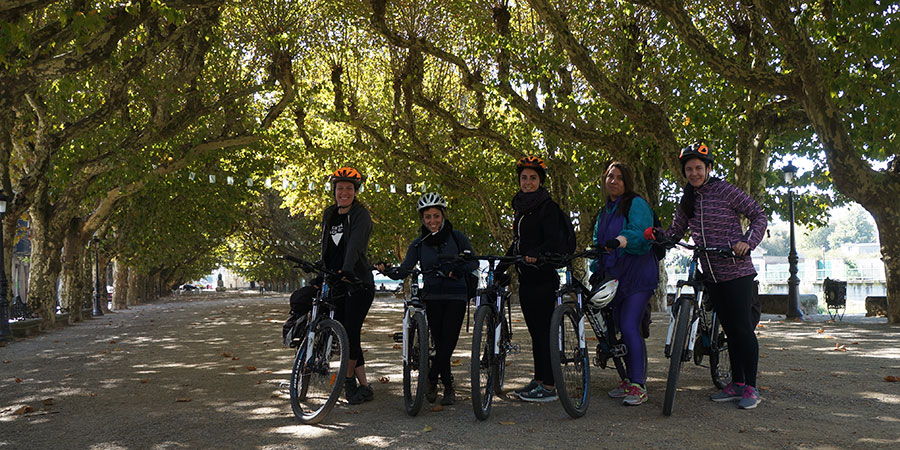
3. Cycling the Camino del Norte
The Camino del Norte traces the Northern Spanish coastline from the Basque Country through Cantabria and Asturias, culminating in Galicia. This journey skirts the edge of the Cantabrian Sea, traversing the lush landscapes famously dubbed ‘Green Spain’.
Upon arriving in the charming historical town of Ribadeo in Galicia, the Camino del Norte veers away from the coastline, covering a total distance of 680km (422 miles), with the final 190km (118 miles) leading inland, away from the sea.
Opting to cycle the Camino del Norte from Bilbao to Santiago de Compostela will span 18 days. For those seeking a somewhat shorter venture, starting from the coastal city of Gijón in Asturias to Santiago de Compostela can be completed in just ten days.
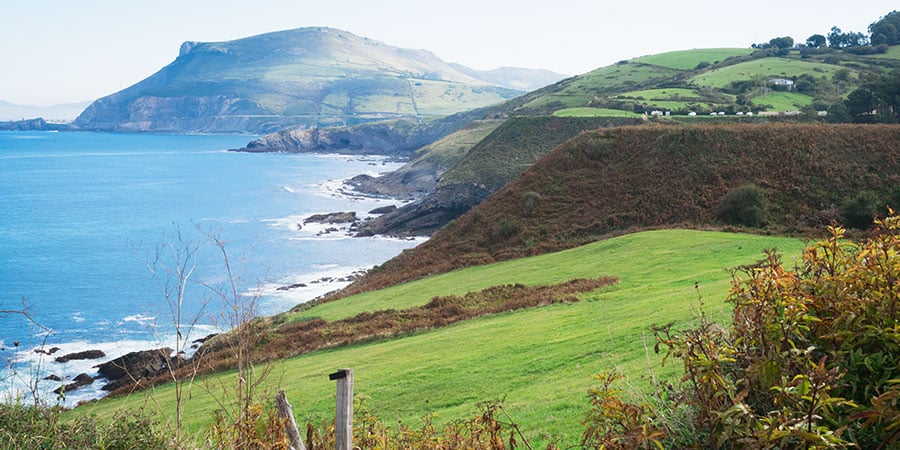
4. Easy Cycling to Cape Fisterra and Muxia
Opting for a cycling journey to Fisterra and Muxia presents a wonderful brief adventure, requiring merely three days of cycling to reach Cape Fisterra and Muxia.
Unique among Camino trails, this route commences in Santiago de Compostela. It leads cycling pilgrims through the magnificent western Galician coastline, in the Costa da Morte area, famed for its quaint fishing villages, untouched Atlantic shores, and breathtaking coastal vistas. Only the first cycling day is purely inland.
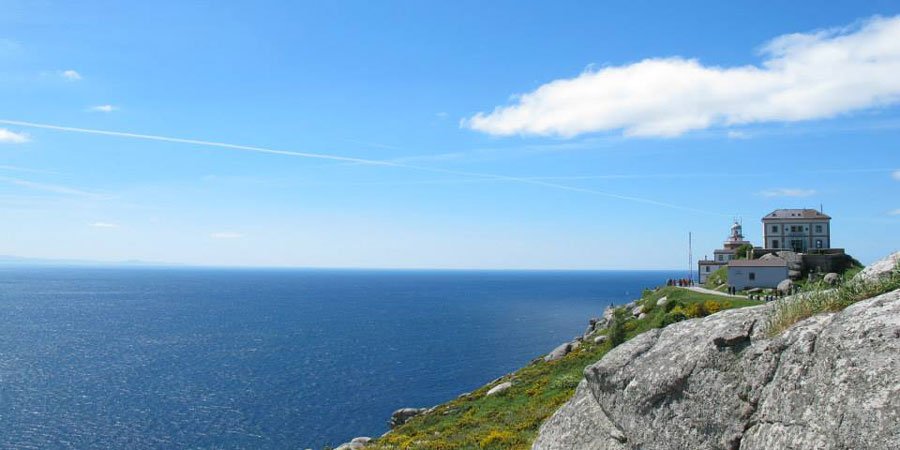
5. Cycling the Via Francigena
Cycling along the Via Francigena, particularly from Lucca to Rome, offers an enchanting voyage between two of the world’s most splendid cities. This route presents the chance to explore Siena, renowned for its breathtaking UNESCO World Heritage historic centre, and Rome, affectionately known as ‘The Eternal City’ for its rich history and the myriad of magnificent structures that stand testament to its storied past.
Spanning 11 nights, your cycling expedition will weave through the scenic terrains of both Tuscany and Lazio, enveloping you in landscapes adorned with undulating hills, lush vineyards, and serene lakes. The hills along this route are pleasantly manageable, guiding you along gently rolling roads and trails. A highlight includes passing through the remarkable Val d’Orcia, yet another UNESCO World Heritage Site, celebrated for its influence on Renaissance artists.
This Via Francigena path reaffirms the age-old adage that all roads lead to Rome, granting you the flexibility to commence your cycling adventure from anywhere between the valley town of Lucca, nestled south of the Apennine Mountains, and the timeless city of Rome.
6. Cycling the Camino Primitivo
Cycling the full Camino Primitivo, also known as the Original Way, embarks you on a journey through the oldest Camino de Santiago route. This path, first traversed by devout pilgrims from Asturias in the 9th century—including King Alfonso II—stretches just over 300km (190 miles) and begins in the sophisticated city of Oviedo.
This splendid, albeit lesser-known route from Oviedo traverses the Asturias countryside and ventures into the mountainous landscapes of Galicia, offering a challenge that is both serene and scenically rewarding, making the effort thoroughly worthwhile.
Lugo, renowned for its impressive UNESCO-listed Roman walls, stands as a midpoint highlight of the Camino Primitivo, also acclaimed as one of Galicia’s finest culinary destinations. From Lugo, the path follows an ancient Roman paved road, leading pilgrims through tranquil hamlets, lush woodlands, and charming medieval bridges, eventually converging with the renowned Camino Francés in Melide, just 50km (31 miles) from Santiago de Compostela. This trail gives you the best of both worlds: you’ll get to enjoy the peace and quiet of the earlier stages and the lively and social aspect of the last days along the Camino Frances. If you are up for a challenge, we recommend you walk the full Camino Primitivo from Oviedo to the historic centre of Santiago de Compostela (15 nights), making sure you have time to explore Oviedo and Lugo.
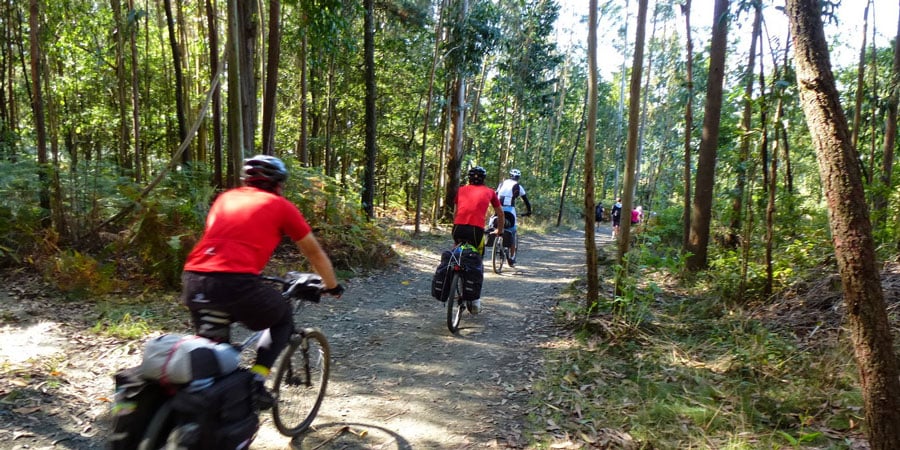
For more information about the Cycling the Camino or any other Camino de Santiago routes or to book your Camino trip, contact us. Buen Camino!
FAQs: Cycling the Camino de Santiago by Bike
A: Cyclists need to complete at least the last 200km of the Camino de Santiago to qualify for the Compostela certificate.
A: Cyclists need to complete at least the last 200km of the Camino de Santiago to qualify for the Compostela certificate.
A: The Camino Francés is the most popular choice for cyclists due to its excellent infrastructure, but the Camino Portugués and Camino del Norte also offer stunning routes.
A: Yes. While children may not cover the full 200km required for a Compostela, shorter sections like Sarria to Santiago (100km) make for an enjoyable and family-friendly adventure.
A: Popular options include the Camino Francés, Camino Portugués, Camino del Norte, Camino Primitivo, Via Francigena, and the shorter coastal route to Cape Fisterra and Muxía. Each offers different landscapes, challenges, and cultural highlights.
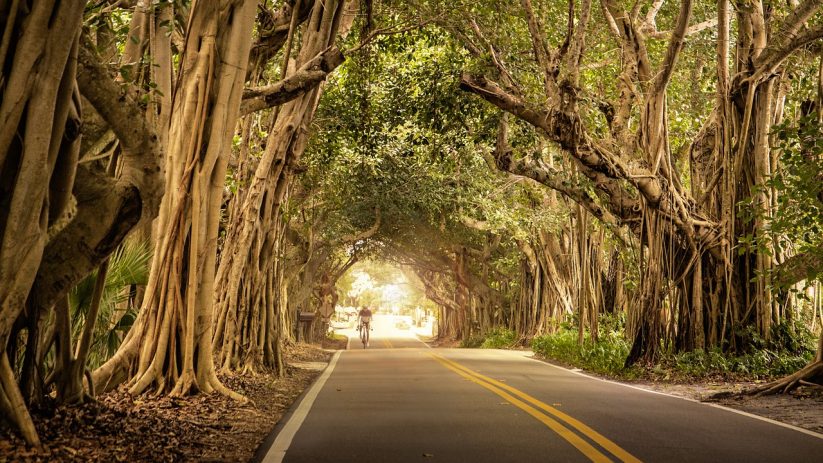
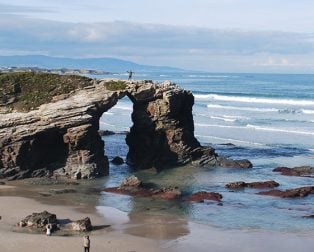
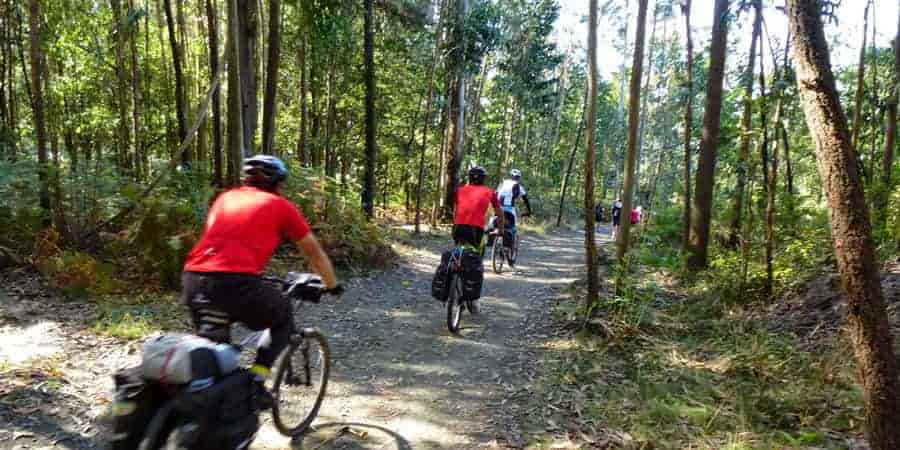
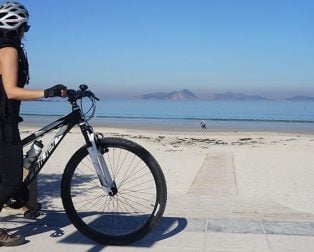

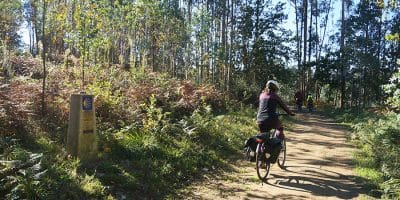
Enjoyed reading the information about the choices of the El Camino.
Especially interested in the bicycling routes in Portugal.
Do you rent e-bikes for short people 147cm?
Thank you, Jenny Miles
Hi Jenny, thank you for your message. Unfortunately, the shortest are bikes are equipped to deal with is 160cm.